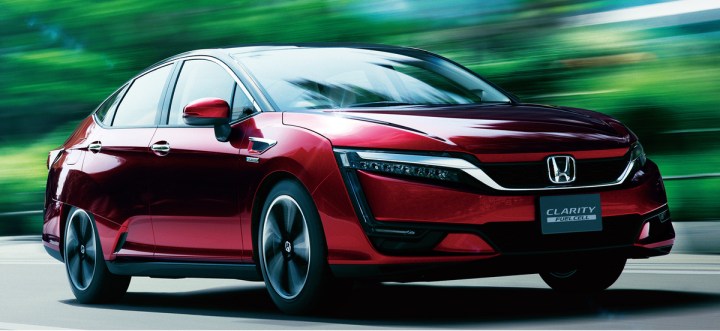
Of course, there are major drawbacks to cars like the Clarity Fuel Cell. The most obvious is the lack of a nationwide fueling infrastructure, which is why Honda’s hydrogen vehicle will only be sold at 12 California dealerships when it arrives at the end of 2016. The brand is working hard to expand the reach of hydrogen, and eventually, the automaker believes owning a fuel cell car will be just as convenient as owning the gas-powered equivalent.
“Not only does the Clarity Fuel Cell fit five passengers and refuel in three to five minutes, it offers customers a driving range on par with gasoline-powered cars,” said Steve Center, vice president of Honda’s Environmental Business Development Office. “The Clarity leads the pack with a 366-mile driving range rating, and with a growing network of hydrogen stations and fast fueling time, the zero-emissions family road trip is no longer science fiction.”
As for the vehicle itself, the Clarity Fuel Cell is slated to arrive by year’s end and will start at around $60,000. However, Honda will lease the cars at first, with a monthly rate of less than $500, keeping it right in line with the Toyota Mirai and Hyundai Tucson Fuel Cell. Speaking of the competition, both the Mirai and Tucson Fuel Cell include three years of complimentary hydrogen fill-ups, however Honda didn’t say whether it would offer the same.
Plug-In Hybrid and Electric variants of the Clarity will go on sale in 2017 after the Fuel Cell launches, but unlike its more exclusive siblings, the Plug-In Hybrid will be available in all 50 states.


